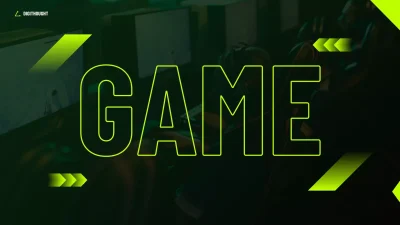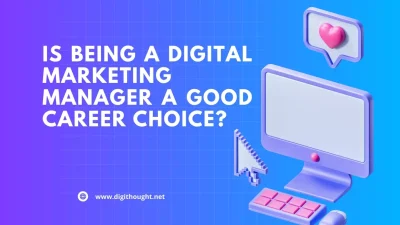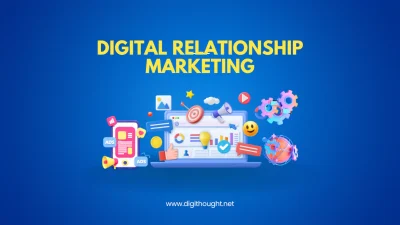The time has been when it has never been easier or more promising to launch a digital product. Digital products have a limitless, scalable market and the ability to scale globally, providing entrepreneurs an opportunity to create engaging, impactful,l and profitable products. But to break through in a crowded market, you need to be inventive, and you need to solve genuine user problems.
If you want to know the next thing you need to create, read on for 10 digital product ideas, analyzing small yet useful tools to consumable content subscriptions. There are links and advice to help you get started.
What Are Digital Products?
Digital products are virtual goods or content that people can download and access on the web. They don’t have to deal with inventory, physical shipping or storage, all of which help to keep costs low. Instead, applying digital as a mechanism of distribution. They include online classes, mobile applications, design templates, eBooks, and more.
As a creator, digital products earn a much better margin, and the sky is the limit on what you sell. After their initial creation, it’s possible to sell the products you’ve made time and time again with very little additional work.
But how can you link to success with such a novel offering? Below are 10 amazing digital product ideas to inspire you.
1. Personalized Journaling Apps
There’s nothing new about journaling apps, but increasingly, there is a demand for personalized, guided experiences. Now, picture an app that tailors its prompts based on a user’s latest entries or mood trends. Features like:
- Mappings to AI-generated themes or interventions
- Voice notes – private audio journaling
- Visual representation for reflecting on how one feels mentally over time
Example: The 2015 app Journey took journaling digital-friendly with guided prompts. Elaborating on this concept through hyper-personalization can reveal a slew of possibilities in the mental health space.
Development Tip: Integrate AI sentiment analysis for real-time emotional feedback and personalized content prompts to the users.
2. AI-Driven Fitness Coaches
Health tracking apps are readily available, but AI fitness coaches that learn and personalize a workout routine based on health data and performance offer a fresh opportunity. Add personal video instructions, adaptive progress, and predictive analytics to get best fit plans.
Example: Companies like Tempo Move and other AI-informed fitness tools have helped establish a new class of digital coaching. They show us what machine learning’s gift to fitness could look like.
Why It’s Unique: These products don’t remain static workout apps; they get better and smarter over time, making them invaluable tools for any kind of long-term fitness goals.
3. Niche Educational Platforms
That said, e-learning is exploding, and hyper-focused platforms targeting industries or skills can, indeed, stand out. Look beyond generic technology categories like code or design by developing marketplaces around specialised skills like:
- Game design for mobile apps
- Rare art form (like pottery or rug weaving) masterclasses
- Studying regulations that are particular to the industry, such as HIPAA compliance
Example: Teachable lets creators sell niche courses (like wine appreciation) on their platform. It emphasizes the need for recognizing underserved learning communities.
Who Should Consider This: Now, writers or subject matter experts can pair with designers and developers to produce sleek, hard-hitting e-learning.
4. Stock Libraries as a Stock Photography Business Model
Stock photo sites—they’re mainstream, but not so much that there’s not room to niche down even further. Provide customized resource libraries for certain sectors, cases or geographies. Examples include:
- Fintech companies with stock-designed icons
- Eco-friendly brand packages
- Diversity and representation media kits
Example: The existence of sites like Black Illustrations that cater in the underrepresented community imagery suggests that even niche, high-quality, curated assets are viable.
Business Model: Offer a subscription model with varied pricing based on a number of downloads, appealing to agencies or creatives.
5. A Smart Budget for Creators
Getting creative or working on contract can mean unpredictable income flows and rising expenses for freelancers and content creators. An Intelligent Financial Planning Software that:
- Scans and categorizes fluctuating income types
- Provides cost-saving ideas customized to seasonal declines in income
- Includes tax calculators
Example: YNAB (You Need A Budget) disrupted the category of managing personal finances. To build one designed for freelancers is another level of added value that none has achieved until now.
Development Stack: Add integrations with payment services such as PayPal, Stripe, or Venmo to simplify the tracking process for creators.
6. Healthy Content Subscriptions
When it comes to health and wellness, everyone’s looking for something new. Put together a subscription package of downloadable guided meditations, stress-relieving ambient soundscapes or live-streamed yoga classes.
Example: Calm and Headspace make wellness digital-friendly. By honing in on the underserved classes, such as working moms or students, you could personalize content even more.
Trend Watch: So this sort of digital product is flourishing as a wellness category booms — one worth an estimated $4.2 trillion globally, according to the Global Wellness Institute.
7. Gamified Skill-Building Apps
There is so much potential when you apply game mechanics to personal or professional growth. Consider apps that gamify:
- Languages (though improved vocabulary training)
- Motivation through team competition
- Competency-based professional credentials
Example: Duolingo employs streaks and leader boards to gamify language learning, and is proof of how simple rewards add a ton of user engagement.
8. AR Home Design Tools
Augmented Reality (AR) is ideal for helping homeowners or interior decorators. Develop a mobile app applying design templates or furniture arrangement on a real space by AR utilization.
Example: Users can preview furniture in their homes with IKEA’s Place app and AR, demonstrating how imaging technology can elevate customer engagement.
Monetization Idea: Work with home improvement stores or furniture makers on an affiliate revenue model.
9. Customizable Event Kits
Create online event planning and management toolkits with templates, checklists and budgeting tools for various types of events. Focused niches might include:
- Weddings
- Startups wishing to raise funding
- Educators designing workshops
Example: The Knot is for the management of wedding events, matching templates with lists of curated vendors.
Upsell Idea: Add VIP event planning webinars or PDF guides as a premium subscription tier.
10. Virtual Reality Networking
With hybrid work here to stay, VR worlds for professional networking events and conferences have great potential as well. Think of designing zones for collaboration where some of the functions include:
- Discover the tailored digital booths by industry
- Go to the VR exploratory panels
- Gamified icebreakers for networking
Example: AltspaceVR, a virtual reality platform, is leading the charge on remote engagement that feels intimate and professional.
Long-Term Impact: With so many verticals chasing virtual reality workplace tools, early plays in the space are seeing 10x returns.
Your Next Steps to Make It Happen
You may have already discovered a good digital product idea that fits in well with your niche and is something you’re passionate about – if so, make a move. Here’s how to get started:
- Market Research: Validate your idea by finding out what leverage points you will be meeting as well as your target audiences’ willingness to pay.
- Get an MVP: Work on an MVP (minimum viable product) you can use to test your concept without incurring too much in development costs.
- Iterate from Feedback: Products that adapt fast to feedback are successful.
Looking for help bringing your idea to life? Discover curated guides and resources for future digital entrepreneurs.



